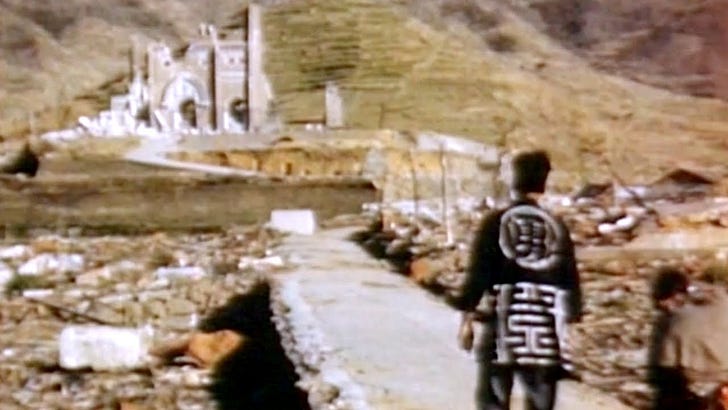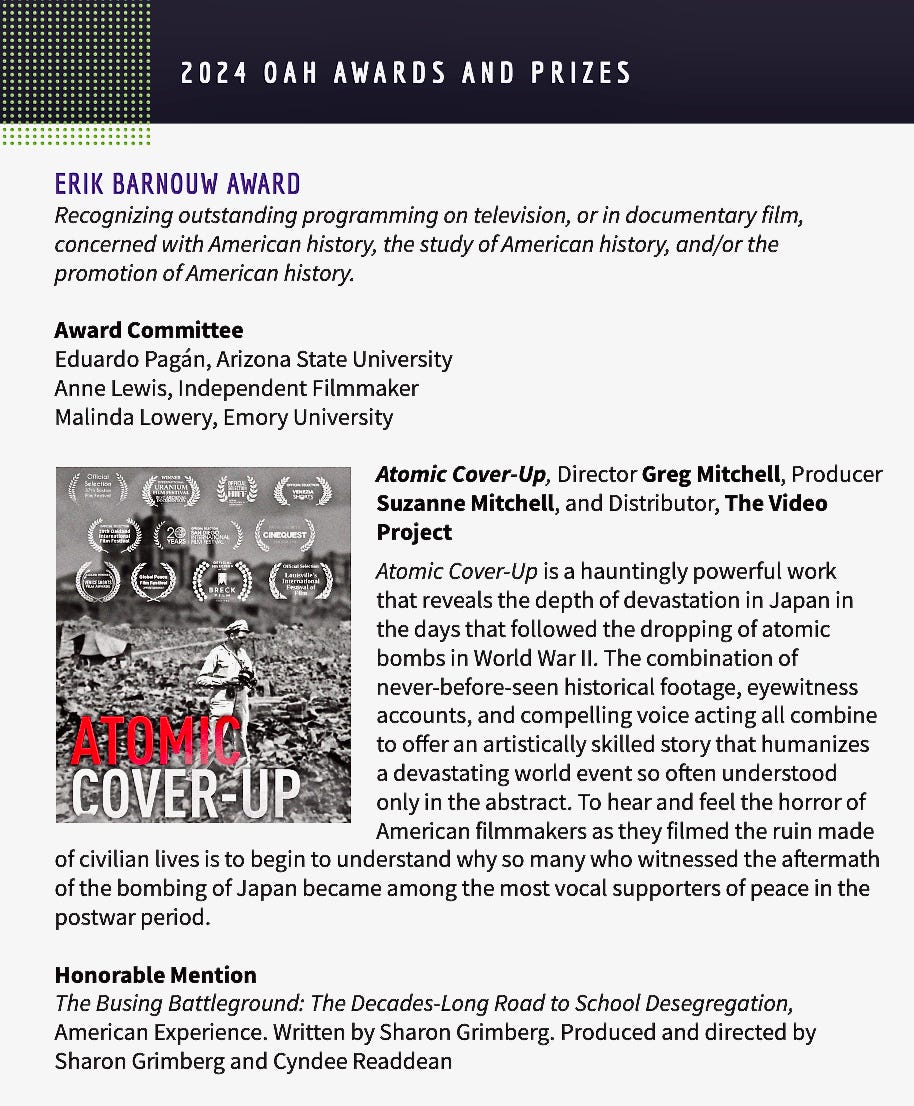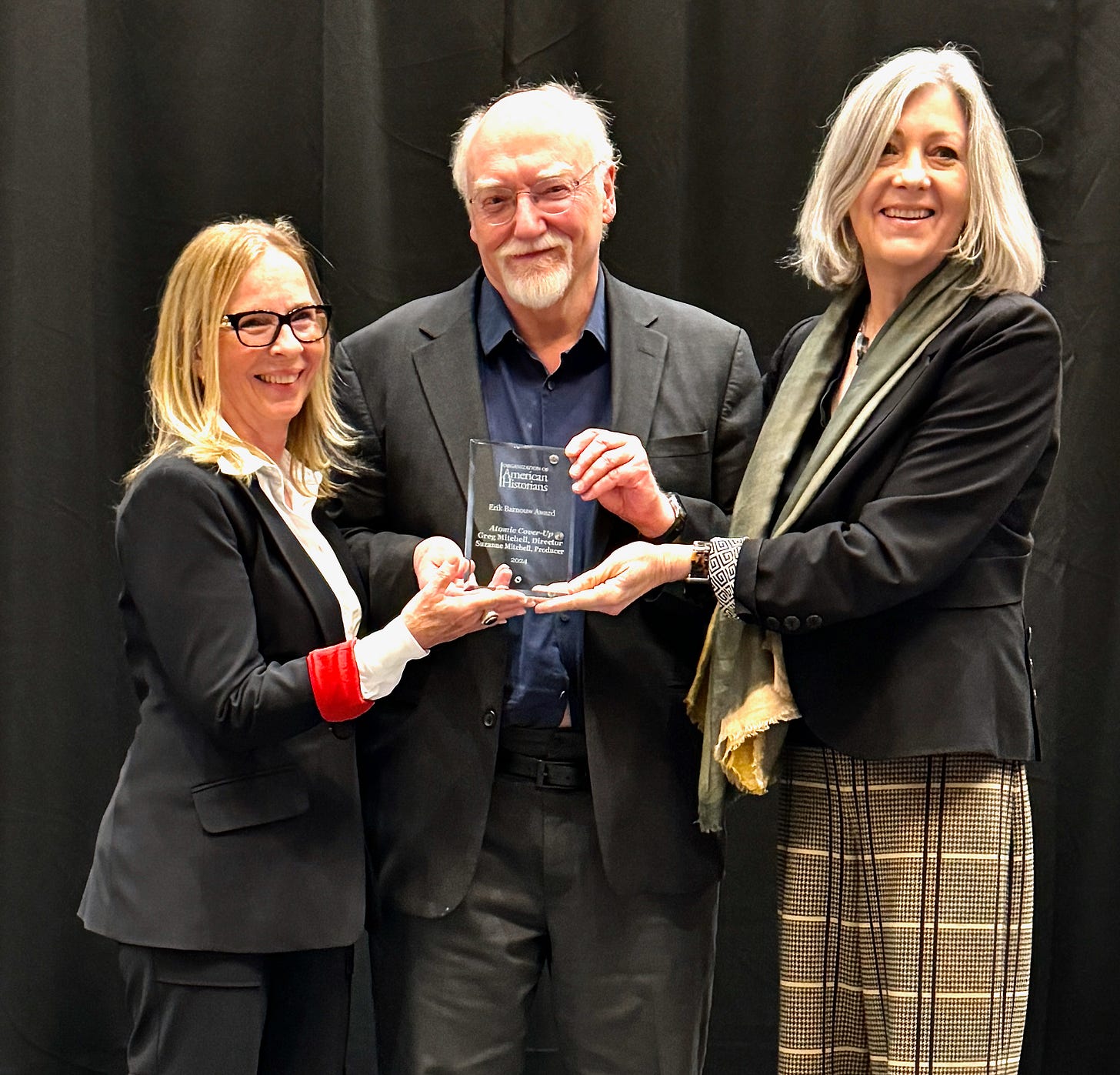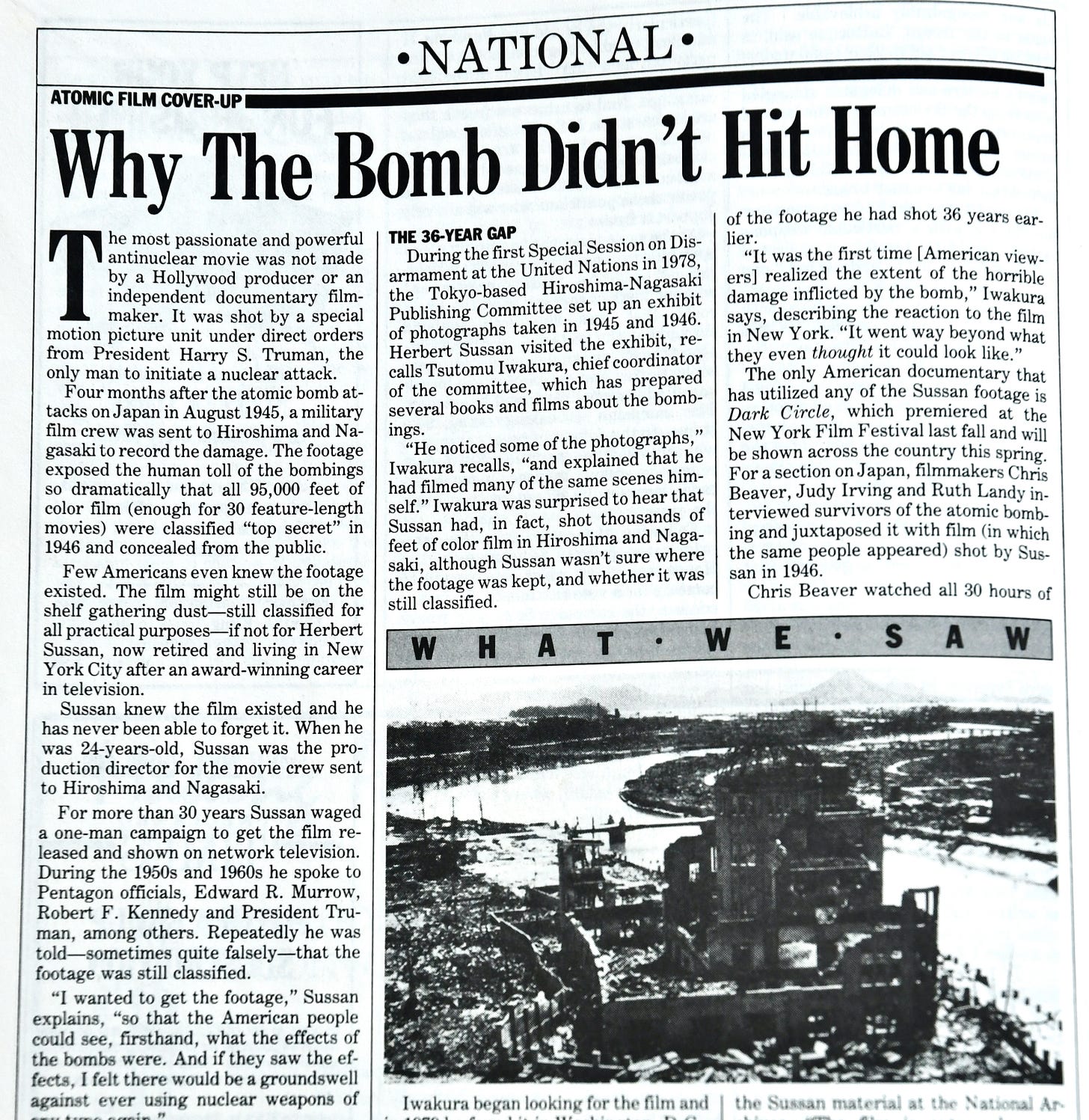The Parts Left Out of 'Oppenheimer'
A new award for 'Atomic Cover-up,' a film which reveals some of what we missed.
Greg Mitchell is the author of more than a dozen books (see link) and now writer/director of three award-winning films aired via PBS, including “Atomic Cover-up” and “Memorial Day Massacre” which are still up at PBS.org. Before all that, he was a longtime editor of the legendary Crawdaddy. You can still subscribe to this newsletter for free.
The following is partly a re-post from my “other” Substack on Monday, but with important additions.
As most of you know, one of my critiques (which many others share) of Christopher Nolan’s “Oppenheimer” was its failure to show any Japanese victims of the first two, and still only two, nuclear weapons used against cities.
There is one scene, set probably at Los Alamos, a few weeks after the Hiroshima bombing, where we watch Nolan’s “Oppie” gravely gaze at an unseen movie screen as a voice describes a few seconds of footage shot in one of the atomic cities in Japan. It’s over quickly. We never see the footage, of course. As I revealed last summer, there is a nearly identical scene in the 1980 BBC/PBS series “Oppenheimer” (starring Sam Waterston) but in that case, after Oppie registers shock, viewers are then shown some of what he was watching.
What those movie Oppenheimers—and most likely the real Oppie—viewed: Footage that was kept from the American public for decades. He would have only seen the first black and white scenes, but the hours of color footage shot a few months later by a U.S. military crew, was suppressed even longer. I first saw some of it, and assigned, edited and published the first full story about the cover-up, in early 1983 when I was the editor of Nuclear Times magazine. I also interviewed the two key members of that American film crew, and three of the damaged Japanese survivors shown in some of the scenes. Then I wrote a book titled “Atomic Cover-up” and another on the first Hollywood movie about the bomb, “The Beginning or the End.” It just took a few decades to write and direct my own film exploring the subject.
You might call it The Parts Left Out of “Oppenheimer.”
Two day ago, I returned from New Orleans, with a new award for that film, “Atomic Cover-up.” It’s the top, and only, film award from the Organization of American Historians (OAH)—the largest group of its kind—for the year’s best documentary or TV program. It was presented Friday night at their annual conference, typically attended by 1500 or more folks.
Previous winners, going back decades, included many Oscar/Emmy winners and nominees, several by Ken Burns, and so forth. Of course, this is especially gratifying since I have been working on it, you might say, for more than forty years.
“Atomic Cover-up” has won three previous awards and screened at twenty festivals in the U.S. and abroad (including in Berlin, Tokyo and Venice). I’ve written about the contents of the film here previously, so mainly today: links, trailer, photo.
First the trailer:
You can watch the film for free in two versions: At PBS.org, as a 28-minute “short.” Via Kanopy, in full 52-minute version.
Here is the award announcement, below, in the official program. Glad to see the unusual citing of the “voice acting,” so thanks again to Dennis Predovic, Osamu Inoue and Rob Burgos (who also edited the film). Barbara Bedway was associate producer, and advisors were Alex Gibney, Alex Winter, Markus Nornes and the late great Marty Sherwin. Also thanks to Leslie Sussan and Robert Jay Lifton.
A pic from the ceremony, with the film’s producer Suzanne Mitchell (amazingly, no relation) on the left and outgoing OAH president Anthea Hartig, who now directs the Smithsonian’s National Museum of American History. A few hours later, fears of a nuclear World War III re-emerged with Iran’s retaliatory attack on Israel.
To contact me, send a query via Comment or send an email via this site, or to gregmitch34@gmail.com.
Now, a few more key links:
—The main web site for the film, which includes background, dozens of responses from notable writers and filmmakers, various links and graphics.
—For educational uses, community screenings, or personal DVD purchase, go to the distributor The Video Project.
—The “companion book” and ebook at Amazon.
Here’s just a bit more on the film from a festival summary, and a link to one of my substack pieces.
“Atomic Cover-up” is the first documentary to explore the bombings of Hiroshima and Nagasaki in 1945 from the unique perspective, words and startling images of the brave cameramen and directors who risked their lives filming in the irradiated aftermath. It reveals how this historic footage, created by a Japanese newsreel crew and then an elite U.S. Army team (who shot the only color reels), was seized, classified top secret, and then buried by American officials for decades to hide the full human costs of the bombings as a dangerous nuclear arms race raged. All the while, the producers of the footage made heroic efforts to find and expose their shocking film, to reveal truths of the atomic bombings that might halt nuclear proliferation. “Atomic Cover-up” represents, at least in part, the film they were not allowed to make, as well as a tribute to documentarians everywhere.
Finally, here is the article I assigned, edited and wrote sidebars for the highly influential first major story in Nuclear Times on what would become “Atomic Cover-up” in early…1983.






